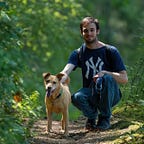The Practice of Patience
Some trees along a nearby trail, guarded by a yellow gate and located beneath a pole line, were mowed down, leaving shredded stumps and spear-like snapped branches. Birds had loved these dogwoods, alders, and pacific willows, but there were few to be found when my Pop, Cagney, and I went in to survey the damages. Our disappointment built as we walked along. Just when we were leaving, however, we spotted a merlin perched on an ivy-draped snag, and we stopped so Pop could take photos. Being almost noon, the sun was high, and it cast harsh shadows. The merlin called out, and her partner, who had just flown in, answered. They mated briefly before one flew off to chase a turkey vulture. The light wasn’t conducive to good photos, so we left.
Our stakeout continued the next day. The merlins were waiting on the snag when we arrived. Cranberry was to our east. Valentine Mountain was to our north, and the mill site was to our west, with Ahgykson Island beyond it. Stands of young trees lined both sides of the pole line, mostly firs mixed in with some cedars, alders, and cherry trees. The cherry blossoms contrasted nicely with the evergreens. A tangle of blackberry, salal, and ferns climbed towards the wires, and occasionally a towhee rustled in the brush. We heard a pileated woodpecker calling off in the distance, while sea lions barked down at Second Beach. A pair of swallows flew overhead, weaving between the poles. An Anna’s hummingbird made big oval loops before resting atop a nearby fir. Urban noise underscored all of this, occasionally being pierced by the sound of air brakes.
The merlins continued diligently chasing birds away. They returned to the snag and mated, but a pesky twig obstructed the shots. The light had also turned poor, so we headed home.
It was hot on the third day of our stakeout, even though we arrived at ten, and the horizon pulsated. The landscape was washed out. Surprisingly, when we found the falcons in their snag, they were in decent light. One was feasting on a mouse. Thus, the wait resumed. Cagney was patient and lay down in the dirt. The conditions were brutal, though, and the taloned talent was uncooperative. We left around noon.
Merlins are most active in the morning. Pop had gone early on the fourth day, for an hour or so, and then we went back around nine. We met workers at the yellow gate, who had been inspecting the recent tree removal, and we told them about the merlins and the suspected nesting site. One of them showed us a map of the area being inspected. They aren’t allowed to work within a hundred meters of a nest which, if found, gets marked on the map. He said that he’d pass our tip to the company’s wildlife biologist, who would check things out.
We walked the trail and came upon a group of ravens making a racket. They must have found something, but we weren’t able to see what it was. We marched on. Turkey vultures circled. Some of them were missing feathers, taken by attacking hawks. The merlins called out from the stand of trees, and soon they returned to the snag, where they were content to rest and sunbathe. Fortunately, the temperature was milder than the day prior. We had brought water, but after an hour of waiting, I ran home to make some sandwiches.
Not much had happened by the time I returned. We were losing the light, but our patience soon paid off. The merlins mated briefly, lasting a few seconds, tops, but Pop got some great shots. The light was right, and there were no pesky branches in the frame. The two flew off and, after seven hours of patience over four days, we had captured the moment we were waiting for.
Photos by Robert Colasanto
